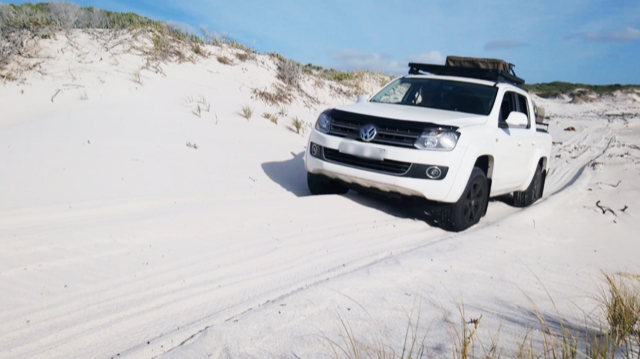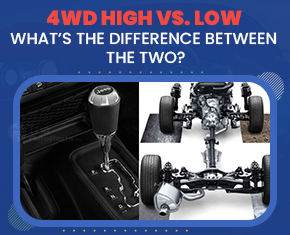As the traction decreases and roads become slippery, the four wheels of the 4WD high put all the four wheels into action. It is enabled during highway driving. On the other hand,4WD low takes advantage of the low gear ratios to provide traction while someone drives on rough terrain with low speed. This is enabled by motorists that are involved in off-road driving. This guide highlights the difference between 4WD high Vs. Low so that the right one can be used when the situation arises.
4WD High vs. Low: What’s the Difference Between the Two?

4WD High (4H), also known as the 4WD highway, is enabled by those driving the car faster instead of highway driving. Those heading towards the suburban street or a rural road take advantage of this option and aren’t used during the snow.
Try not to use the function while driving normally. Don’t exceed the speed limit beyond 55 mph, as this arrangement puts the transmission in mid-range gear. Excess RPM will damage the engine to a great extent.
4WD Low
4WD high is enabled only when someone is driving on normal roads at regular speeds. 4WD low is used while someone is driving on deeper sand or in snowy weather. You can consider it during rock crawling or while driving at low speeds. While enabling this four-wheel-drive setting, keep your speeds at 25 mph or less. It mustn’t be used while driving 4WD High is enabled only when someone is driving on normal roads at regular speeds. 4WD low is used while someone is driving on deeper sand or in snowy weather. You can consider it during rock crawling or while driving at low speeds. While enabling this four-wheel-drive setting, keep your speeds at 25 mph or less. It mustn’t be used while driving on normal roads as it offers torque to the wheel right when you need them the most.
4WD Auto

Modern automobiles come with new features.4WD auto is one of them that has sensors and a sophisticated traction control system that gives us an idea of the setting that would be the best fit for the 4WD system based on the conditions.
In the case of two-wheel drive, the vehicle sets power to the wheels that are moving. Two-wheel drive saves you a great deal of money and offers no help while someone is struck or driving in slippery conditions. For daily commuting, when the road conditions are ideal or whether it is good, 4WD is highly recommended to the motorists.
Using 4 WD would be an ideal option while driving in the rain or on the slippery dirt. You can turn the setting on and let the car decide whether it will operate or not. Many times it is going to keep the car in a 2WD mode that will be switched when car conditions become supportive.
4WD Vs. AWD: Which One to Use When?
Most people are confused between all-wheel and 4-wheel drive. In the case of Four wheel drive, all the wheels are moving. You don’t need to enable the arrangement inside the car as wheel speed sensors will alert the system as the tires lose their grip and the clutch, along with the drivetrain, sends more torque to the wheels to help it get better traction.
What Exactly is 4WD?
4WD is a term that generally refers to the drivetrain of a vehicle. This arrangement basically delivers power to 4 wheels of the car. The wheels get the power that is two times more than the two-wheel arrangement. The power is divided in such a way that the wheels get better traction as the road becomes slippery. In the 4WD arrangement, the wheels still move as the other ones are getting the power. This configuration is found in SUVs and trucks as you drive them off-road. In a 4-wheel drive, you will notice mechanical linkage between transmission and axles. It’s the transmission that gets power from the engine, which is shared with the transfer case. Gear ratios minimize the rotational speeds and perform torque multiplication when necessary. The transfer case spins two drive shafts at the front, and another one is sent to the gear.
In the case of an open differential, power is supplied to a single wheel. A car that is economical or compact doesn’t run on ice or on spin while you try to accelerate the tires. Both the wheels spin equally in case of a limited spin differential that alters the speed between the right and left tires.
In a car with a locking differential, both wheels operate at the same speeds. This sends a good amount of torque to the tires, an extra grip, and leads to premature wear when it locks itself permanently.
Is 4WD Worth the Price?
Pay premium charges and have 4WD installed in your car. The only question you would have would be whether it is worth the price? All this depends on where you drive and the purpose you’re using the car for. As you drive on rocks and snow, this arrangement would improve traction, thereby making the journey more enjoyable. Since both sets would be involved traction and control, there will be significant improvements in traction and control.
4WD is ideal for those seeking some extra grip while moving down the trials. This arrangement has numerous drawbacks; you’ll end up spending more on fuel that will burn a hole in your pocket. The additional equipment will increase the weight of the car, so it will undergo extra tire wear and demand maintenance.
The Bottom Line
Compare the situations, then set 4WD to high or low. For more such tips, visit the well-established online car parts and accessories store ‘The Auto Parts Shop’ today!
